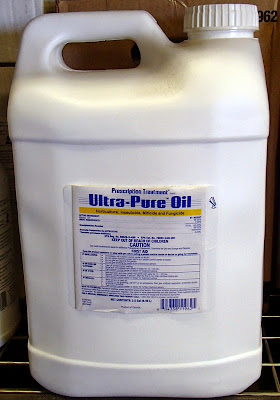Q. I’m digging out an area to plant a Chilean Mesquite
and the dirt is really terrible. I’m
going to dig about 6’ diameter, nice and wide, and to the depth of the
rootball, like you said. I want to replace all the dirt in the hole with
quality soil. Is there a mix from Viragrow that you can recommend for a
Mesquite?
A. Let me add more information. I think
you are ready for it.
1. Make
sure the hole you dug will drain water. If you fill the hole with water it
should drain in 24 hours. If you are only putting water in the bottom of the
hole because you want to hurry, then put about two inches of water in the
bottom of the hole TWICE.
The first time watering, water will move to the dry surrounding soil fast so it will move quickly to
fill these dry spaces. Let it. Then refill it and mark the level with a
stick or nail. Something easy to see and find. That water level should move
down, probably slowly but it should move. The water level should drop one or
two inches in a few hours or faster. If it does, then drainage is not a
problem.
You should not have to dig a hole deeper than the roots of the plants you are digging. UNLESS water does not drain from the hole. If you MUST dig the hole deeper, make sure to compact the soil below the tree before planting. You can compact the soil with water draining or mechanically at about 90% compaction or firm enough so that your footprints are not more than 1/2 inch deep when you walk across it.
2. It is
best to use the same soil taken from the hole rather than buy new soil. But
this soil should have rocks removed larger than a golf ball. Then mix compost
with this soil. Use an equal volume of compost (its going to be "fluffly") with an equal volume of soil (it will be more compact).
This will result in an organic content of your new soil of about 25 to 30%
which will drop to about 15% in year 2 and about 7% in year 3 or 4.
Trees and
shrubs do best with organics in the soil of about 5%. The roots will establish
in this soil quickly if the plant is staked to keep the roots from moving.
If you want to use a soil from Viragrow in the planting hole instead, then use their
Garden Soil Mix straight and fill the hole with it. As you are filling the hole
with this mix, collapse the edges of the hole into this mix so the surrounding
soil is well mixed with the imported soil from Viragrow. This will avoid
a boundary layer of two different soils (your soil vs garden soil) but this
boundary should, instead, slowly mix with each other as you go from inside the hole to
outside the hole. This mixing helps remove a strong boundary layer.
3. Viragrow recycled municipal waste carries a very high nutrient content in a slow release form in their 166 and Premium composts. The tree will not need additional fertilizer for maybe three
years. With a mesquite tree you will control its growth with your frequency of
applying water. Not the volume of applied water.
When first establishing the
tree, water it like any other tree. Water frequently so water gets 24
inches deep and then hold off with the next watering AT LEAST one day until you
see new growth and then start watering less often. You want it to grow faster,
give it water more often. You want it to grow slower, water less often. But always give it the same amount of water each time.









.JPG)
.JPG)

-001.JPG)

